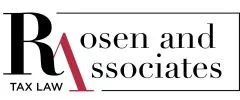The New Housing Rebate, outlined in subsection 254(2) of the Excise Tax Act, provides a financial break on the GST or the federal portion of the HST paid when purchasing a new home from a builder. This rebate primarily targets individuals who intend to use the new home as their primary residence or plan for a family member to occupy it as their main living space.
How the Rebate Works
For properties priced up to $350,000, including the land cost, the New Housing Rebate covers 30% of the GST paid, effectively reducing the GST from 5% to 3.2%. As home prices surpass $350,000, the rebate amount gradually decreases and becomes unavailable for homes priced above $450,000.
It's important to note that various forms of this rebate cater to different situations. These include individuals who:
- Lease the land their home is on.
- Purchase co-operative housing units.
- Construct their own homes.
- Buy homes with the intention of renting them out.
Properly filing for the New Housing Rebate is crucial to ensure you receive the appropriate amount based on your specific circumstances.
Additional Provincial Rebates
In Ontario, there is a complementary rebate for the provincial portion of the HST. This rebate covers 8% of the provincial HST, up to a maximum of $24,000, for newly constructed homes priced up to $400,000. This provincial rebate aims to further alleviate the financial burden on new homeowners.
Ownership and Agreements
By default, the New Housing Rebate is allocated to the homebuyer. However, it's essential to be aware that if there is an agreement between the homebuyer and the builder, the rebate may be transferred or otherwise specified as part of the home purchase agreement.
The New Housing Rebate offers significant financial relief for new homeowners in Canada, making it easier to manage the costs associated with purchasing a new home. Understanding the eligibility criteria, rebate calculations, and application process is key to maximizing the benefits of this rebate. If you are planning to buy a new home, consider consulting with a tax professional or the CRA to ensure you fully benefit from the New Housing Rebate.
Conditions for Claiming the New Housing Rebate
To qualify for the New Housing Rebate, you must meet the following criteria:
- Taxable Supply of a New Home: To qualify for the New Housing Rebate, the home must be a single unit residential complex, defined as a “residential complex” containing either one or two “residential units,” or a house primarily used as the owner's principal residence, including rooms rented out on a taxable basis, or a residential condominium unit.
- Primary Residence: The home must be intended to be your primary residence or that of a relative. The primary residency criterion is based on the intention at the time of assuming liability under the agreement of purchase and sale.
- Factors indicative of a primary place of residence include the property being demonstrably intended as an individual's or a qualifying relative's place of residence for purposes such as mailing address, income tax forms/returns, voting, municipal/school tax, and telephone listing. Personal effects should be moved in after possession or substantial completion of construction to demonstrate occupancy.
- If the property is not occupied after possession, there must be evidence that the intention to occupy was frustrated.
- Notably, an insurance policy stating that the property is the insured's personal residence provides strong evidence of an intention to make it one's primary residence. Additionally, disposing of any other owned or leased residence at the time of acquiring, constructing, or substantially renovating the property also indicates the intention to establish it as a primary residence
- For individuals or qualifying relatives owning or leasing more than one residence, factors such as time spent, work location, amenities, and property suitability will be considered to determine the primary residence.
- No One Else Lives in the Home Prior to Transfer: The home or condominium must not be occupied as a place of residence or lodging before possession is given to the purchaser under the purchase agreement, except for a condominium, which may be occupied by the intended purchaser before closing.
- Purchase or Construction: The house must have been purchased from a builder or constructed by yourself. The rebate also applies to substantial renovations or the conversion of an existing property into a new home.
- Total Consideration Does Not Exceed $450,000: The total of all amounts payable for the property or any interest in it must be less than $450,000.
- GST/HST Paid: You must have paid the GST/HST on the purchase or construction costs of the home. The rebate is not available until GST/HST has been paid, as its purpose is to offset a portion of the HST. Note that paying GST/HST is different from it being remitted by the vendor.
- Application Deadline: The rebate must be filed within two years of the possession date of the home.
To ensure eligibility for the New Housing Rebate, it is crucial to understand and meet all the specified conditions. This includes confirming the property type, demonstrating the intention for it to be the primary residence, ensuring no prior occupancy, complying with purchase or construction requirements, maintaining the total consideration below $450,000, paying the applicable GST/HST, and filing the application within the required timeframe. Meeting these conditions can help maximize the financial benefits offered by the New Housing Rebate.
How to Apply for the New Housing Rebate
Applying for the New Housing Rebate involves several important steps to ensure a successful application:
- Gather All Relevant Documentation: Collect the purchase agreement, invoices showing GST/HST paid, and proof of occupancy or your intention to occupy the home as your primary residence.
- Complete the GST190 Form: Obtain the GST190 form from the CRA website and fill it out accurately.
- Submit the Application: Submit the completed application form along with all supporting documentation to the CRA.
- Await Approval: Once your application is reviewed and approved, you will receive the rebate amount either through direct deposit or a mailed cheque.
Common Mistakes When Utilizing the New Housing Rebate
Avoid these common mistakes to ensure a smooth and successful rebate application process:
- Incorrect/Incomplete Application Forms: Ensure all sections of the application forms are filled out correctly and completely.
- Missing Supporting Documentation: Make sure to include all necessary documents, such as purchase agreements and proof of GST/HST payment.
- Incorrect Calculations of the Rebate Amount: Double-check your calculations to ensure the rebate amount is accurate.
- Missing the Application Deadline: Submit your application within two years of the possession date of the home to avoid missing the deadline.
- Misunderstanding Eligibility Criteria: Familiarize yourself with the eligibility criteria to confirm you qualify for the rebate.
- Not Accounting for Substantial Renovations Properly: Ensure any substantial renovations meet the criteria for the rebate and are properly documented.
- Not Splitting the Rebate Correctly Among Multiple Owners: If the property has multiple owners, ensure the rebate is correctly allocated among them.
- Ignoring Provincial Variations: Be aware of any provincial-specific rebates or variations that may affect your application.
- Assuming All New Homes Qualify Automatically: Not all new homes qualify for the rebate; make sure your home meets all the necessary conditions.
The content of this article is intended to provide a general guide to the subject matter. Specialist advice should be sought about your specific circumstances.



